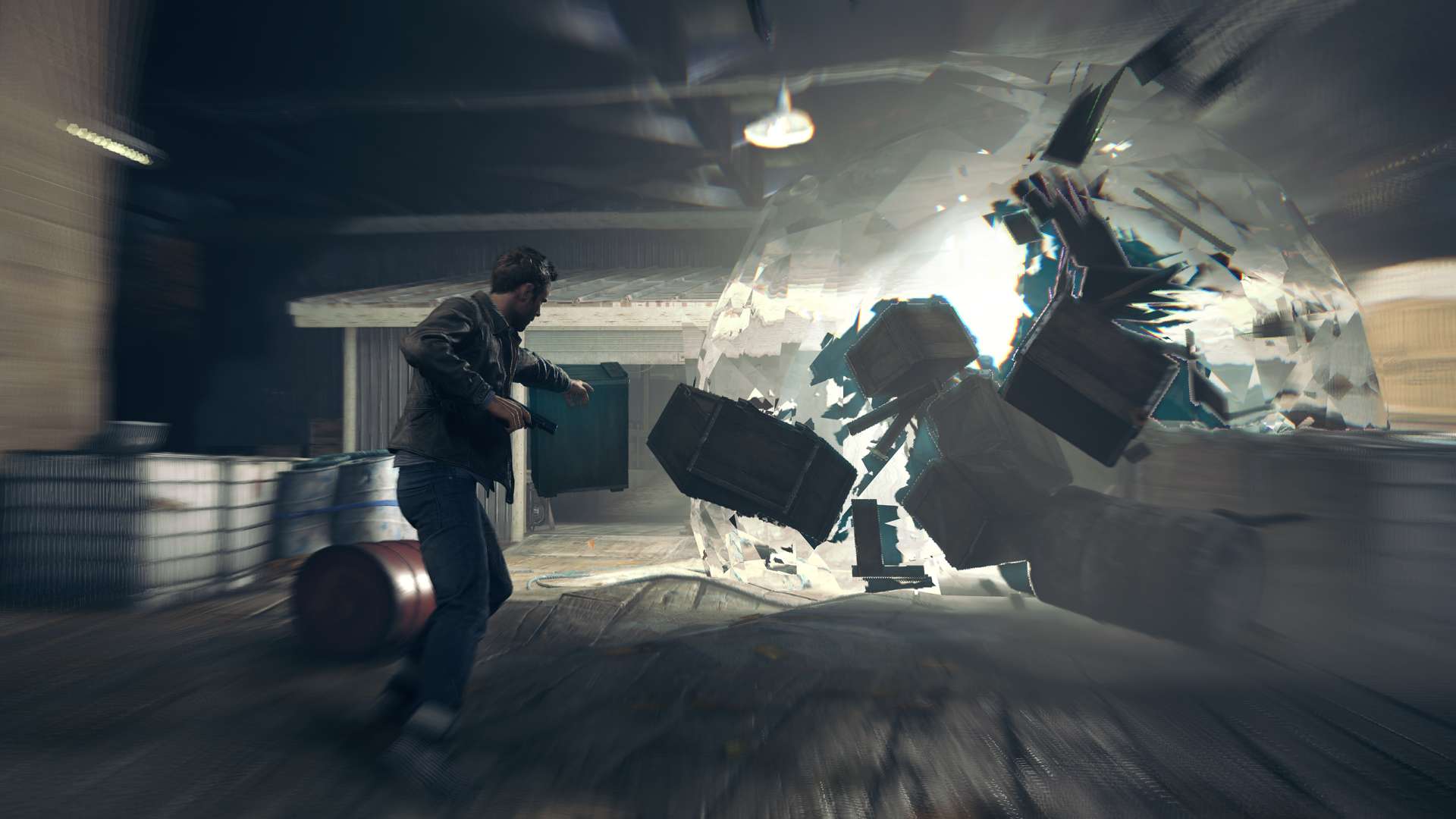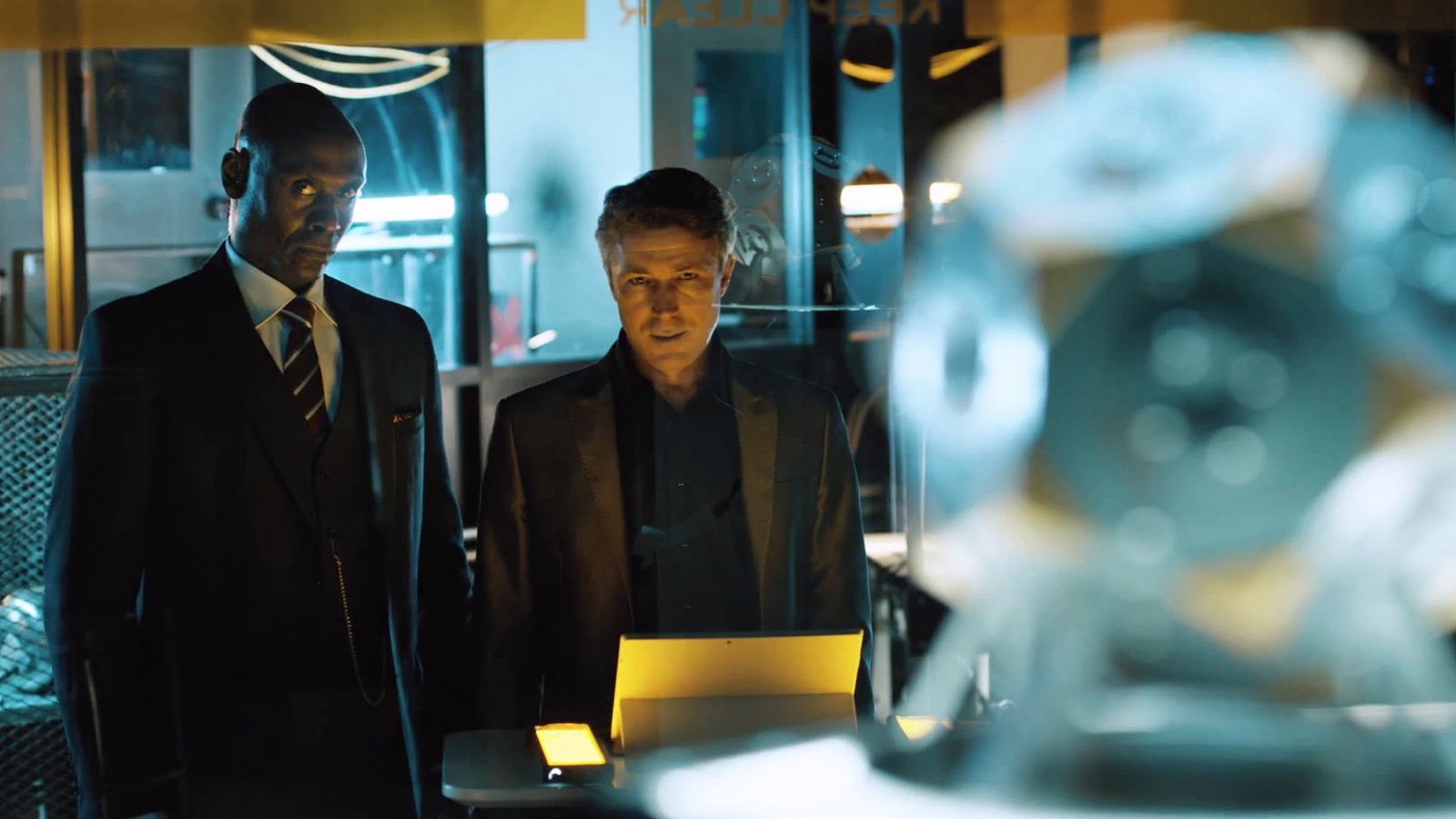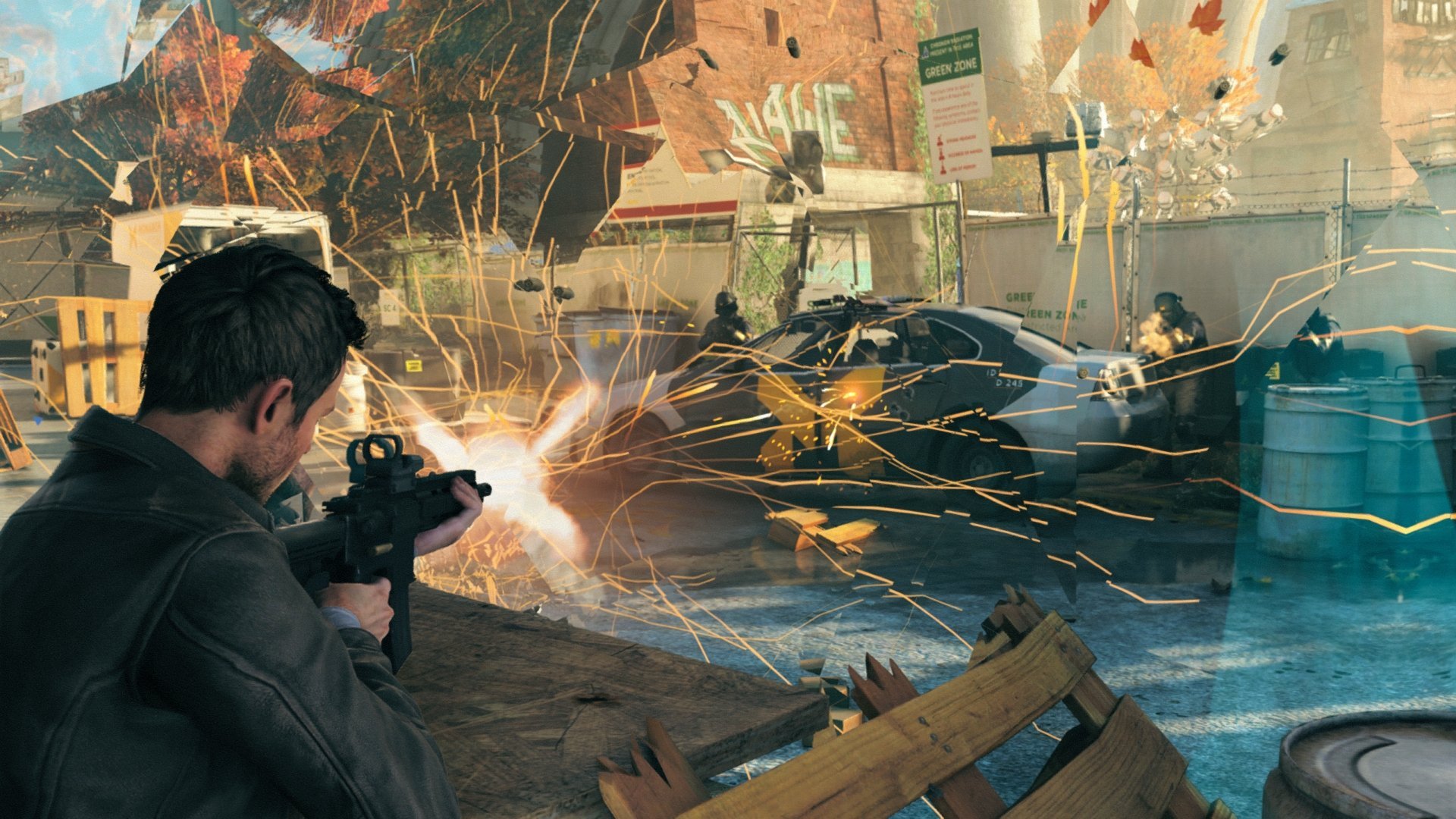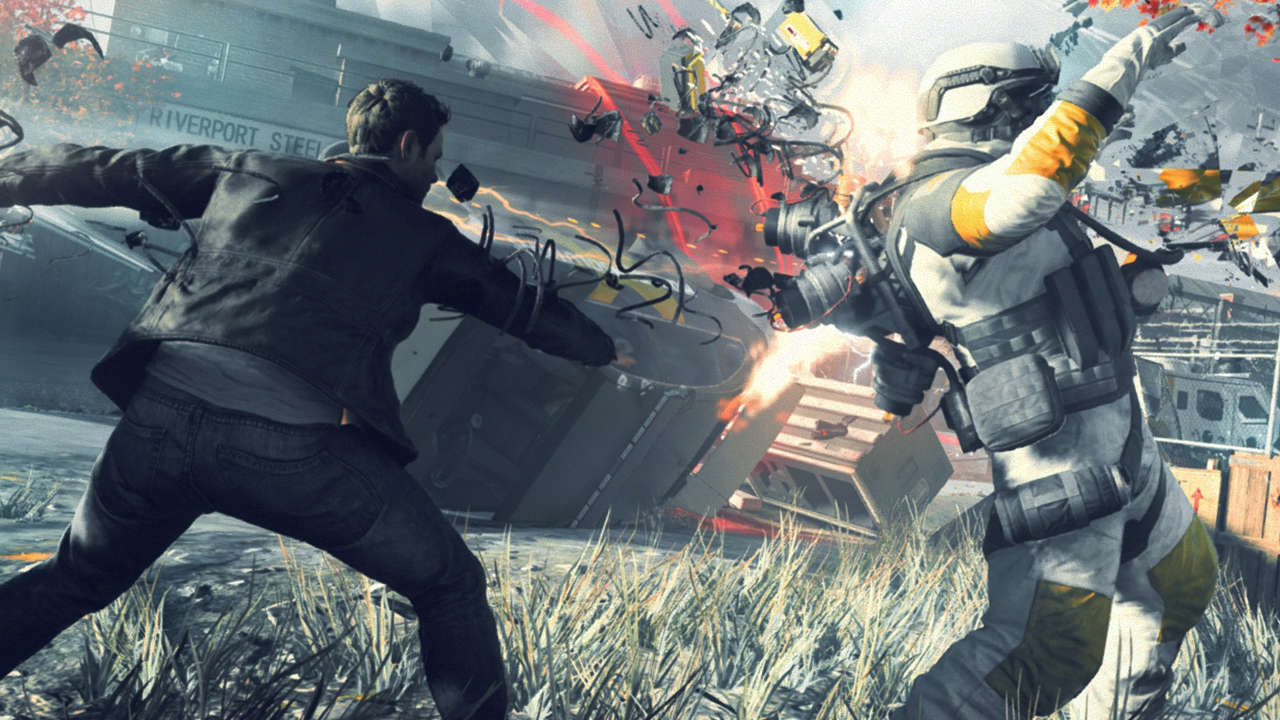On paper, Quantum Break sounds like a fractured, weird mess. It sounds like something stuck in an odd limbo between wanting to be both a game and a TV-styled miniseries. In execution however, Remedy has not only delivered an engrossing science fiction story, but also a fun shooter, a unique, new form of interactive storytelling, and easily one of the best time travel games ever made.
The idea of time travel is nothing new to video games, let alone to storytelling in general. Whether it’s the fun, wacky time travel of Back to the Future, or the dark and gritty time travel of The Terminator, the idea has been done before. That said, rarely do such stories come together to be as compelling, epic, or as deeply thoughtful as Quantum Break. And that’s not even mentioning how unbelievably cool Quantum Break’s shattering of time looks.
As Remedy’s latest game opens, players step into the shoes of Jack Joyce, a man just arriving back in the United States to find his brother and best friend have made a time machine. When the machine first turns on though, a fracture is ripped in time and a paramilitary force from a company called Monarch Solutions bursts through the door. Right from there, a narrative brimming with time travel, corporate intrigue, and metaphysical debates kicks into high gear.

What makes Quantum Break’s spin on the tried-and-true time hopping story so refreshing is the hardline approach it takes. While discovering you can’t change the flow of time is at the heart of more than a few time travel narratives, Quantum Break treats it as an absolute fact from the onset. Forcing a tight, brutally intense look at what we all do when faced with inevitable consequences, the game revolves around the trials of its heroes and villains alike as the world tumbles towards the unavoidable End of Time.
In truth, throughout the majority of Quantum Break, and even now, I had a hard time calling the game’s antagonists ‘villains.’ It’s a fact wholly owed to the game’s phenomenal storytelling. Spaced between the game’s five acts, there are four live action TV-styled episodes of a show, with each episode running just under half-an-hour long. While players are given the option to skip the episodes, there’s every reason not to. Well put together and interesting in their own right, each one progresses the story and ties back into the gameplay portions. Ultimately, the show is just as important as any of the digital cutscenes.
At the opening of each episode the player is presented with a decision between two possible roads going forward. That decision then directly affects the next episode of the show. Though a simple, binary choice on the surface, the far reaching implications of each decision throughout the entirety of the game keep the choices from ever feeling cheap or tacked on.

Beyond this, what makes the live action portions so notably interesting is the fact that, for the most part, they focus on the so-called villains of the story: the people inside Monarch Solutions. Few games manage a true ensemble cast, but Quantum Break does. Fleshing out every corner of its game world with well-acted and engaging characters on both sides of the growing conflict, the narrative feels larger and much more like some kind of grand epic.
The star-studded cast, including X-men’s Shawn Ashmore, Game of Thrones’ Aiden Gillen, Fringe’s Lance Reddick, and Lord of the Rings’ Dominic Monaghan, all bring weight to the gameplay segments and the show. A massive step above the awkward, low-budget TV show feel the live action portions could have easily fallen into, each episode is finely done, action-packed, and a joy to watch.
The immediately noticeable and outstanding strengths of Quantum Break’s narrative aside, it’s still presented as a third-person shooter. And here too, it mostly excels. A loose-cover based game (similar to the Tomb Raider reboots), Remedy starts things off simple, but soon piles in a whole host of interesting time altering abilities. Allowing you to plow though enemies with style, the powers continue the same broken glass look seen throughout the rest of the game. And as you’d expect, from being able to put a shield around yourself, to throwing time distortion fields that explode like bombs, the powers at your disposal are all delightfully over the top.

With the new abilities pushing you to always stay on the move, I struggled with them at first. It was a strange process of adjustment to mesh that with the usual cover-based shooter mentality of hunkering down and picking your shots . By the second act however, it was completely natural. Throwing up a shield, stopping time on a sniper in the distance, dashing from cover, and then blasting my way through his stunned friends became the immensely satisfying and fluid cadence to every fight. The chance to upgrade each power in a limited fashion, coupled with the fact that new abilities continue to unlock as the story unfolds, kept the fights interesting and unpredictable throughout the majority of the game.
Sadly, this falls apart near the end, the very cadence I just described beginning to get stale in the later acts of the game. With all the powers introduced, and no new enemies to change things up, some of the last fights (all mostly structured around throwing as many bad guys at you as possible) begin to wear. But ultimately that did little to affect my overall thoughts of the game, as, despite its appearance on the surface, I never really saw Quantum Break as actually being a shooter.
Yes, technically there’s third person shooting in the game. But in my first playthrough I spent far less than half of my 14 or so hours actually shooting anything. The game is instead first and foremost about the narrative. While playing, I found more similarities to narrative exploration games, like Gone Home, than to action-adventure titles like Tomb Raider, or shooters like Gears of War.

In all, there’s over 130 different “Narrative Collectibles” in Quantum Break. Everything from videos, to emails, memos, radio broadcasts, and diaries dot every corner of the game. Some are as short as a few sentences, but others are dozens of paragraphs long, the vast majority actually tending towards the latter. Collectibles like these are certainly nothing new, and going into the game I assumed I’d pick them up when I saw them, but probably only read a few (just like with most games I’ve played).
In the case of Quantum Break however, I read every single one I found. While there are a few throwaway joke pieces, the vast majority are actually pertinent to the narrative. Characters’ heartbreaking lives and inner thoughts are fleshed out and chronicled in letters, notes, and diaries. Ominous explanations of motivations and schemes, entire character relationships only hinted at in the main course of the game, suddenly take center stage in what are by and large well-crafted and fascinating pieces of narrative.
They felt so integral to explaining everything that was going on in fact, the point soon stopped being to shoot my way from one place to another. Instead, the focus became finding the next clue in the immeasurably complex narrative Quantum Break sets forth.

There’s obviously no ‘wrong way’ to play any game. But running though and not taking the time to absorb and sink into all of the collectibles feels like it would compromise the game as a whole. The choice to have the majority of them structured as long winded text is likely to turn many off. For those willing to look past that though, Quantum Break builds and maintains one of the most nuanced and detailed casts of characters to grace any video game in a long time.
With how strong and deeply emotional these collectibles are, it’s especially unfortunate to then consider the context in which they’re introduced. When reading a collectible, the game doesn’t pause. More often than not a companion is left knocking on a door, waiting for you to unlock it, or calling for you to hurry up. It’s a small consideration, and one admittedly bypassed by pausing the game for yourself and digging through the game menus to find the collectibles. But it still leaves the experience feeling a bit rougher than it needed to be.

In the end, Quantum Break’s only real flaws come in the form of minor things. Though infrequent, a handful of visual glitches plague the game, most as minimal as the mantling or melee animations sometimes not lining up just right. Both times anything more serious occurred (once with me falling though the map, and once with a cutscene loading as only a black screen), a quick return to the last checkpoint fixed the issue.
That checkpoint placement throughout the game however, also leaves something to be desired. Though I only died during a few boss fights, the last checkpoint was set as far back as another group of enemies. Fighting my way through and reaching the boss again would then trigger a cutscene. And while these cutscenes can be skipped, the loading screen you receive for doing so is often longer than the cutscene would have been on its own. Far from game breaking, the inconvenience was still needless.
Despite its few issues, with solid gameplay, stunning time shattering visuals, fascinating characters, and a jaw-dropping science fiction story to boot, Quantum Break is hard not to love. Quite simply, it presents a engrossing, complete world, filled with characters I legitimately felt for. It manages to use both live-action, and normal gameplay to weave together a great, truly unique experience, with a voice and approach all its own. Needless to say, it’s something I hope we see more games iterate and improve on in the future.

